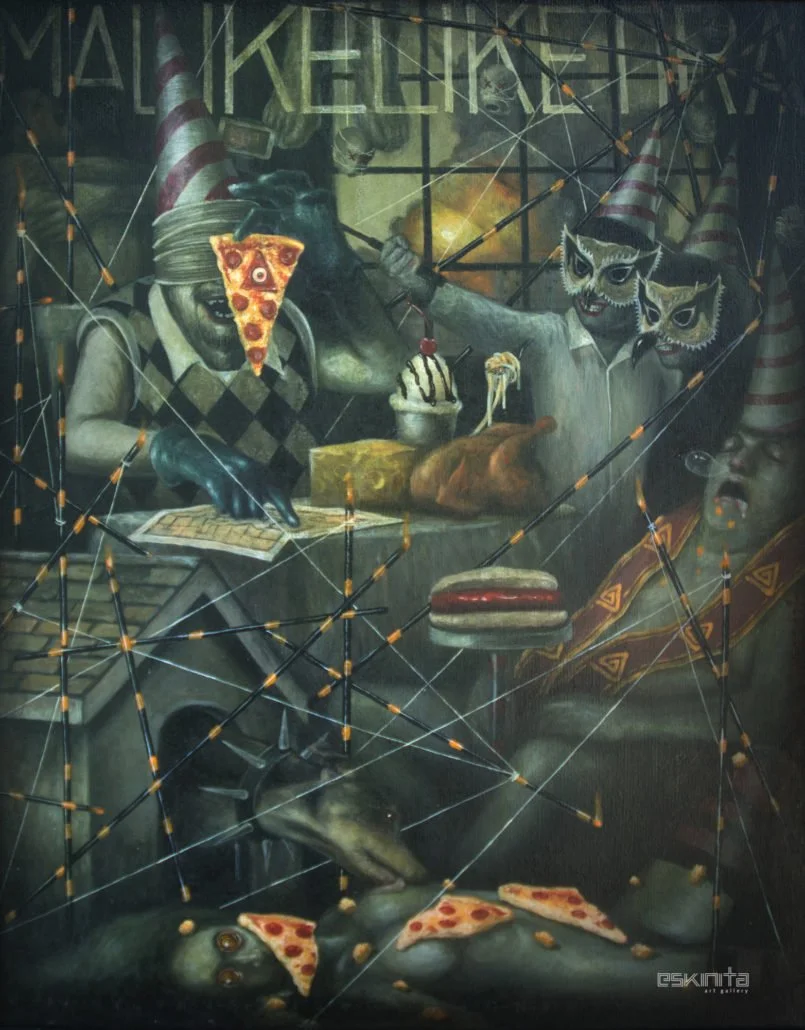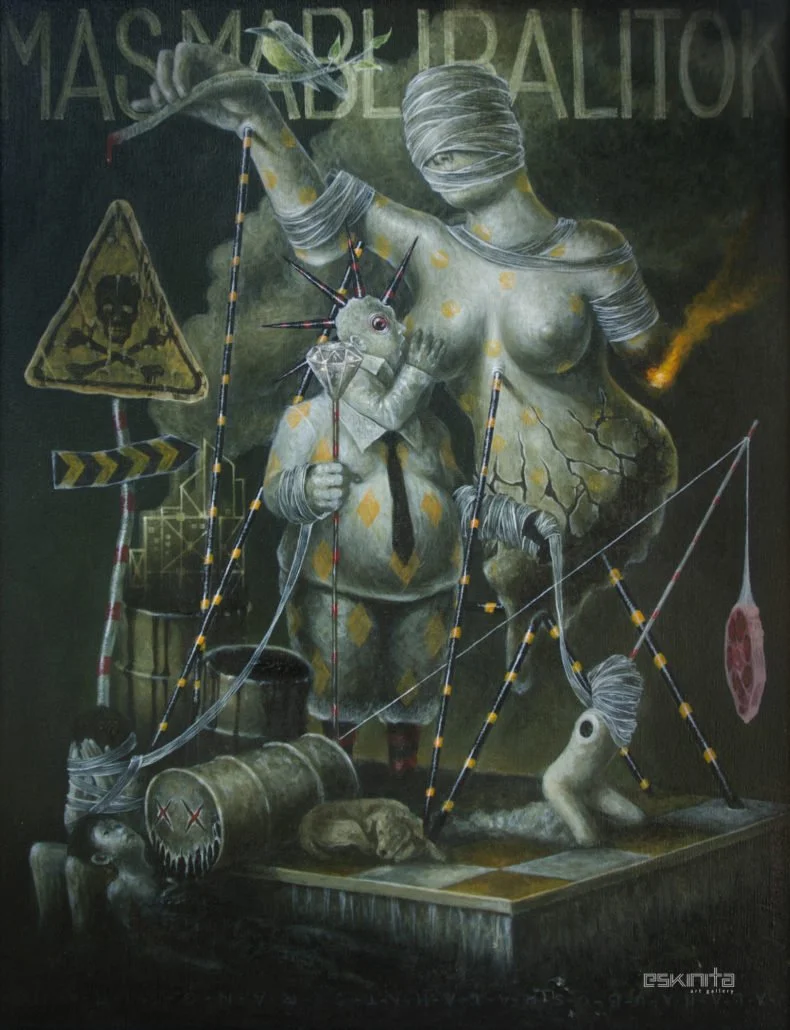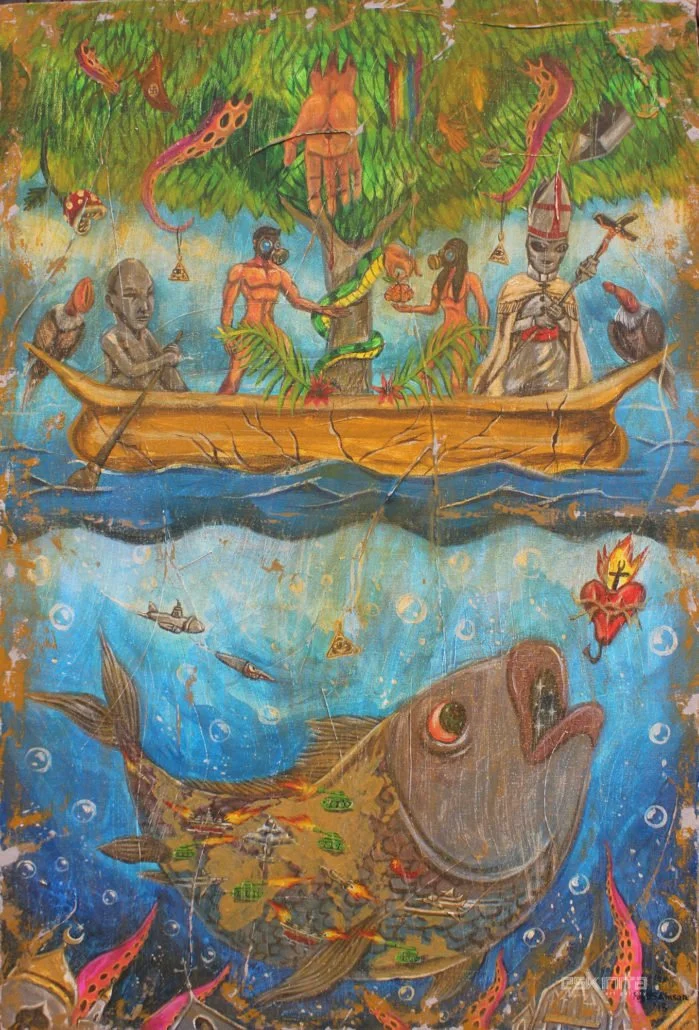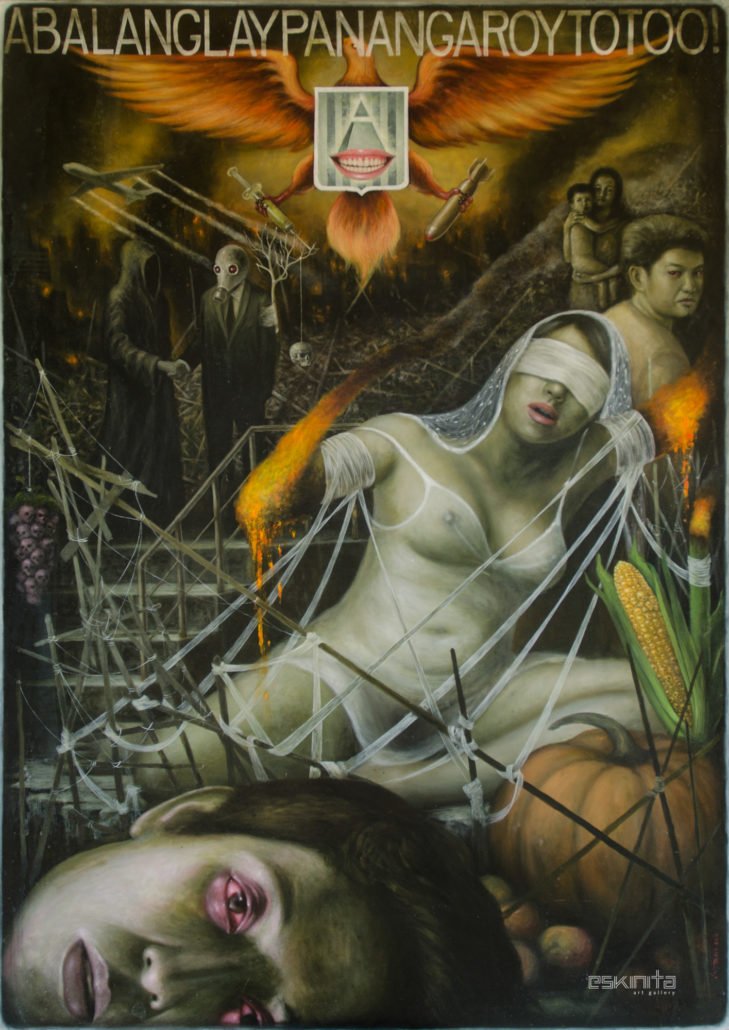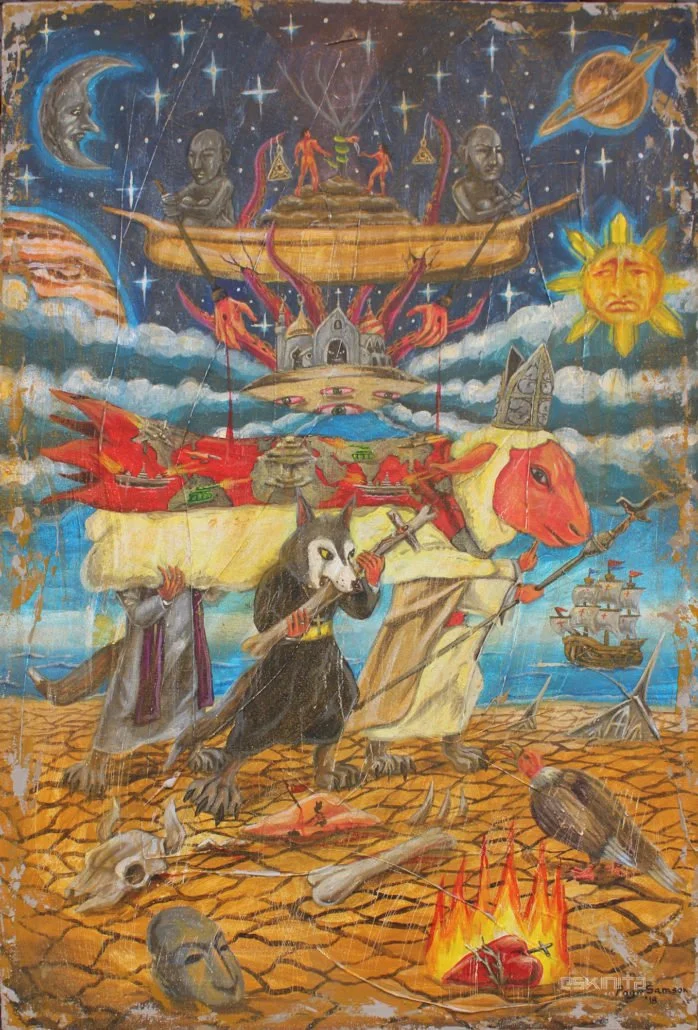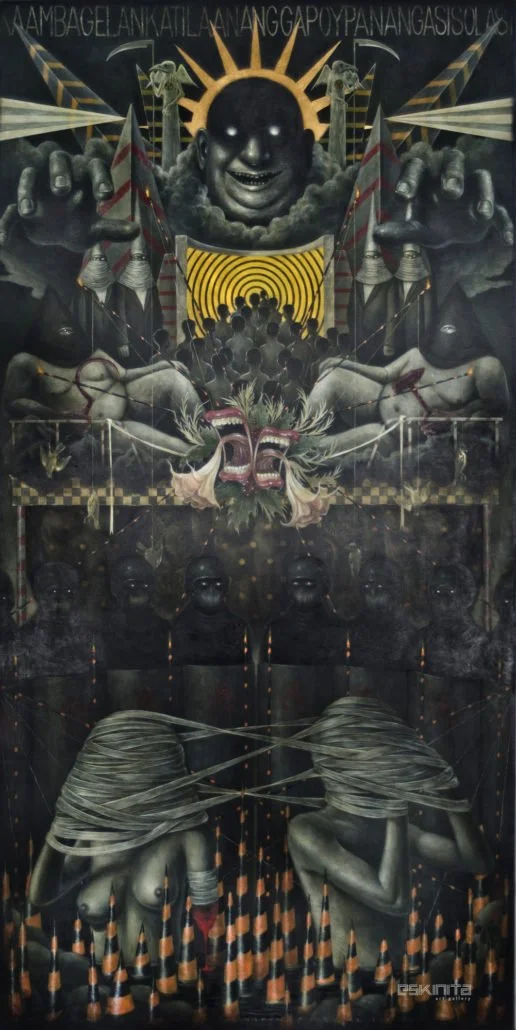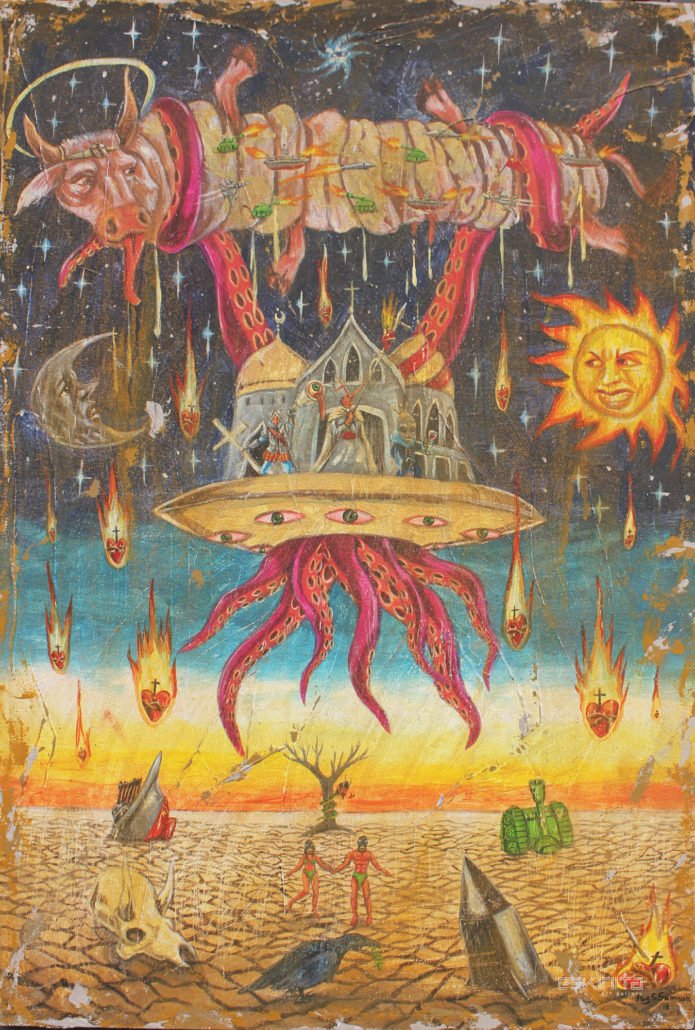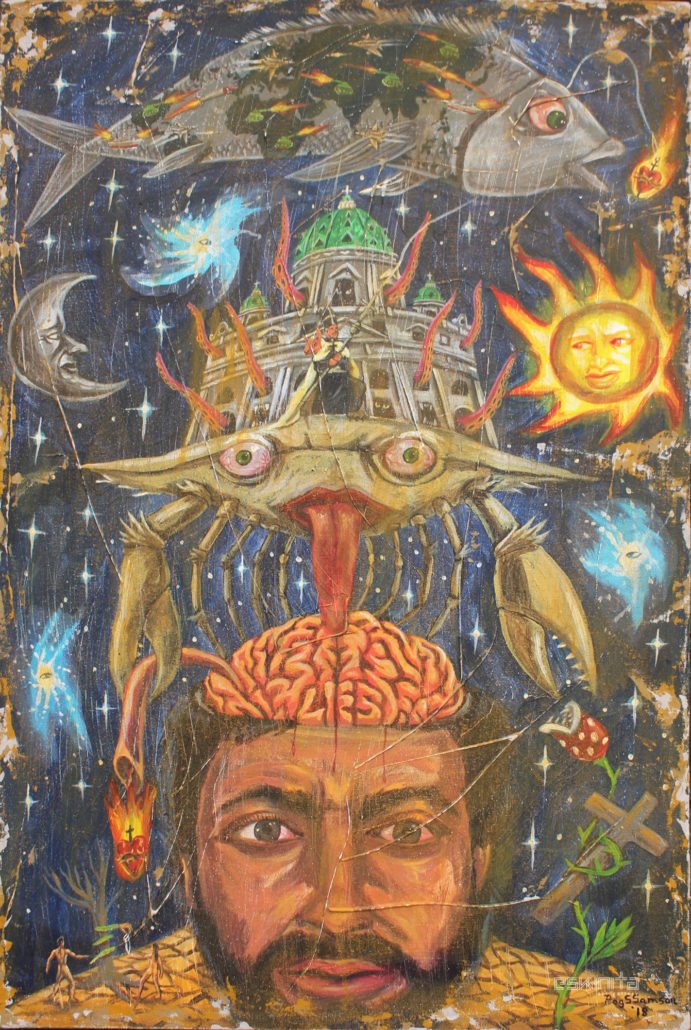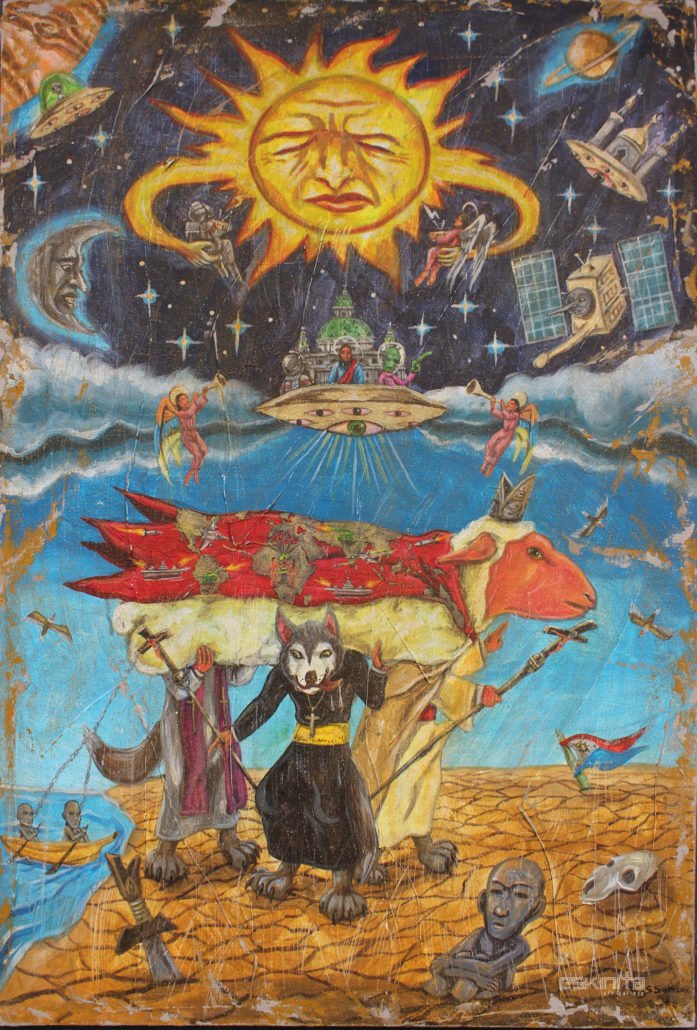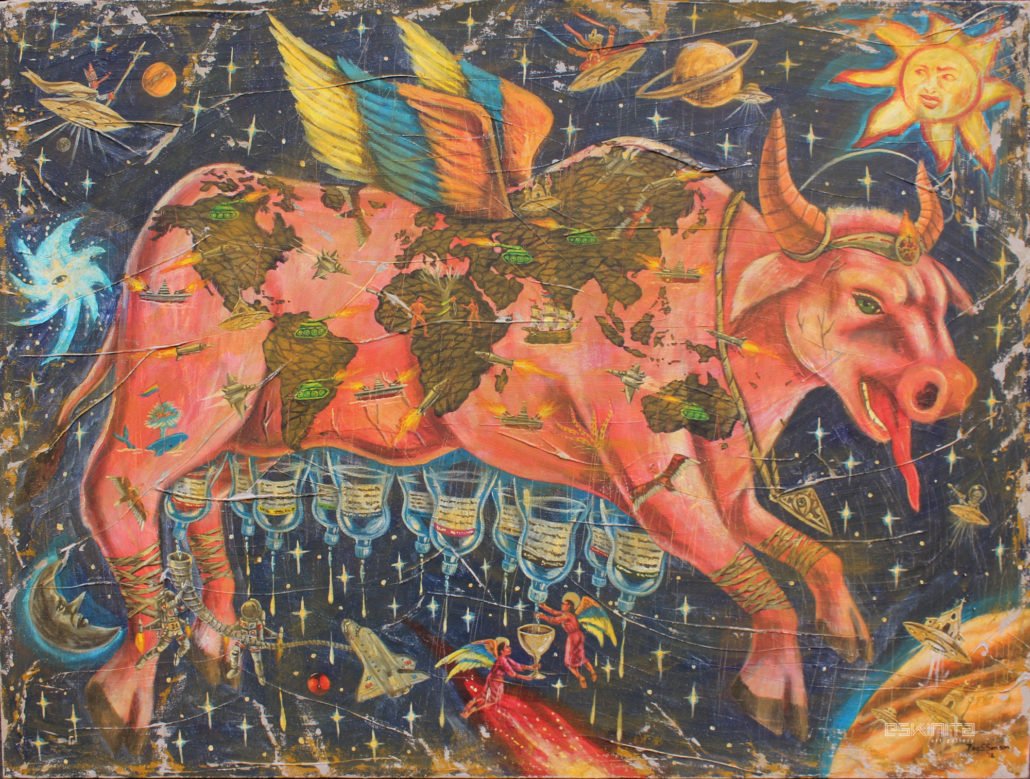
Divine Dramedy
Pogs Samson/ Jojit Solano
April 8 to 30, 2018
Among the contemporary Filipino artists working today, Pogs Samson and Jojit Solano are perhaps two of the most fearless examiners of the national id, laying bare the bones of our collective failure and moral decay. In a figuration that is at once menacing and confrontational, the two artists share a deep pre-occupation in how the instruments of power—particularly religion and the elite—manifest their influence in order to control, abuse, and pervert others, often through the agency of existing channels that are meant to safeguard the less fortunate, such as the justice system and the agency of the church.
The title of their two-man show, Divine Dramedy, is, of course, a subtle inversion of Dante Alighieri’s Divine Comedy, which chronicles the poet’s allegorical journey to Hell, Purgatory, and Paradise. In the works created by Samson and Solano, the world they wish to plumb is the here-and-now, which seethes with corruption, injustice, and false consciousness. No alleviation to the upheaval is forthcoming, no god is coming down from the heavens to arrest the misery. Death and ruin are everywhere present; the powerful have triumphed.
For Solano, even Lady Justice, whose eyes are wrapped with cloth so she can provide a sound verdict, prostitutes her fairness, with the moneyed class directly suckling from one of her teats. The world is fueled by greed for temporary pleasures, and those who are in the position to accumulate them would stop at nothing, even at the expense of others. The deaths of the poor and the marginalized are unmistakable in the foreground of the artist’s works, with one figure looking accusingly at the viewer with a pair of bloodshot, lifeless eyes.
Samson, on the other hand, demonstrates his loss of faith on any organized religion by portraying it as the primary pillager and destroyer of the planet. Priests are wolves in liturgical vestments. Churches ride on tentacled spaceships, as if to underscore how they offer nothing but pure fantasy, magical thinking. In one work, a church astride on a crab “lobotomizes” the brain of an individual, transforming him as a zombie-like believer. Pieces of the sacred heart hit the already arid land like missiles. For the artist, religion is military-like in the kind of destruction it inflicts.
In coming up with their powerful commentaries, both Samson and Solano have to combine existing iconography with a deeply personal visual language in order to craft a new register that can address present-day realities. Their figurations, while divergent in styles and moods (Samson employs a more varied palette redolent with phantasmagorical imagery while Solano evokes a nightmarish mood complete with horrific figures and objects), are evidently surreal, as if mirroring back our deepest, darkest fears residing in the collective unconscious.
Divine Dramedy extends the unflinching examinations of Social Realism to the 21st century by unpacking the day-to-day grotesqueries that we need to confront if we have to have any luck in averting their absolute control in our lives. Our freedoms and conveniences are not a given, and those who lack or have less of these are prone to being made further invisible. With their antagonistic position to power, the works of Pogs Samson and Jojit Solano jolt us, the viewers, out of our complacency and, by exposing them, assure that the wicked don’t have a good night sleep.
-Carlomar Arcangel Daoana


